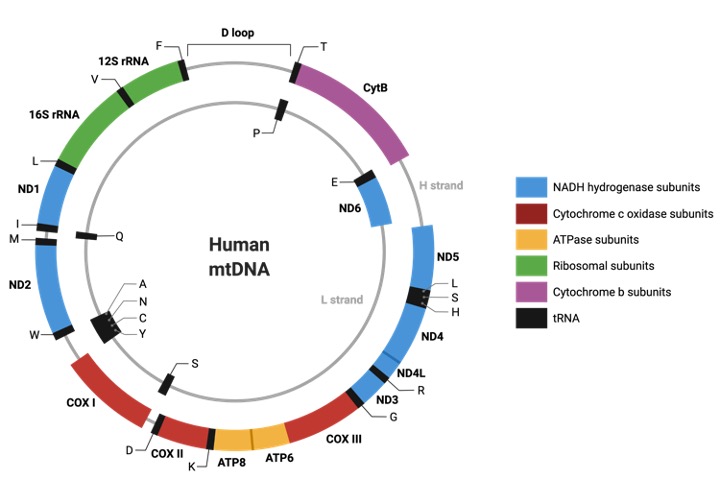Table of Contents
Mitochondrial DNA
When it comes to tracing ancestry, the mitochondrion, the cell’s powerhouse, is a good place to start. This organelle has its own unique set of DNA, which is thought to be passed exclusively from mothers across generations. As a result, looking at mitochondrial DNA (through mtDNA genealogical DNA testing) might aid in tracing ancestry and, as a result, determining ancestral or family ties.
However, a group of scientists recently discovered that mitochondrial DNA is not entirely transmitted from mothers. New evidence of biparental mitochondrial DNA inheritance calls into question the long-held belief that mitochondrial genome inheritance is solely matrilineal or female line.
What is Mitochondrial DNA?
The mitochondrion (plural: mitochondria) is the cell’s powerhouse, producing metabolic energy, particularly in the form of adenosine triphosphate (ATP). It accomplishes this through a mechanism known as cellular respiration.

Apart from that, the organelle is referred to be semi-autonomous since it contains its own genetic material apart from that of the nucleus. More genes are arranged into chromosomes in the nucleus, which is in charge of nearly all metabolic activities in the body.
The genetic material in the mitochondrion, referred to as mitochondrial DNA, is, on the other hand, rather scarce. It contains the genetic code for making the RNAs and proteins required for the mitochondrion’s many activities, including as energy generation.
Mitochondrial DNA and Inheritance
The mitochondrial DNA in humans is thought to be inherited exclusively from the mother. This belief is based on the events that occur during conception. A helix of mitochondria on the sperm’s neck powers up the tail, allowing it to swim toward the ovum. When the sperm eventually makes it inside the ovum, it leaves its neck and tail on the ovum’s cell surface.
Mitochondria introduced into the ovum would be inactivated and destroyed over time. As a result, the zygote finally receives just the mitochondria from the ovum. The typical human ovum has 200,000 mtDNA molecules. As a result, several mitochondrial DNA-related characteristics and illnesses point to maternal origin.
According to the Mitochondrial Eve theory, tracking the matrilineal genealogy of all recent human beings will lead to all lines culminating on one woman known as “Eve.” The idea is based on the fact that human mitochondrial DNA is only passed down through the female line. Independent empirical data and clinical investigations, however, call this assumption into question.
Schwartz and Vissing, for example, described the case of a 28-year-old man with mitochondrial myopathy. As a result, the patient was found to have a mutation (a novel 2-bp mtDNA deletion in ND2 gene). Normally, the gene codes for a component of the mitochondrial respiratory chain’s enzyme complex I. As a result, the defective gene impacted the enzyme’s synthesis, resulting in the patient’s severe, lifelong exercise intolerance.
Furthermore, Schwartz and Vissing noted that the patient’s mitochondrial myopathy was inherited from his father. A group of researchers recently discovered paternal inheritance of mitochondrial DNA in 17 people from three distinct families. They found father-to-offspring transmission after sequencing their mitochondrial DNA.
A mother’s mitochondrial DNA is said to be passed on to her children. However, current research suggests that the father may be able to pass it on to his children. Paternal DNA from mitochondria makes its way into the ovum in some way.
It is expressed rather than degraded or inactivated. Mitochondrial DNA from dads may not be as uncommon as previously believed. This might undermine the Mitochondrial Eve idea if additional research confirms it shortly. It may also cast doubt on mtDNA genealogical DNA testing. In order to understand genetic illnesses caused by defective mitochondrial DNA, we may need to turn to the opposite side of our family tree.







